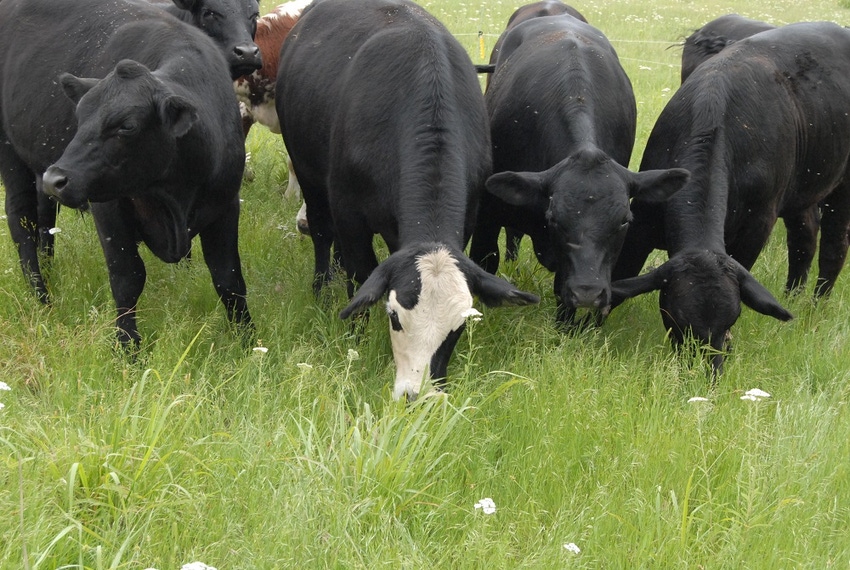
In the November issue of Beef Producer my friend and mentor Walt Davis was at the top of his game with an article titled “Ranchers still believe weeds are No. 1 enemy.”
Walt rightly explains how most wars on weeds simplify the plant community and set the operation up for wrecks that are predictable and unnecessary. Often the result has been seen as fairly high production followed by near nothing. Walt used the term "boom and bust production" and this is a very accurate description to operations both he and I have participated in and witnessed.
However, after reading Walt's good column it occurred to me the term "boom and bust" can be misunderstood because it has different meanings depending on who is speaking it.
Boom-and-bust managed grazing as practiced by Ray Bannister of eastern Montana and R.P. Cooke of Tennessee’s Highland Rim is the management practice to eliminate booms and busts in production.
When Bannister and I say "boom and bust grazing," it is management based on complete plant recovery periods followed by severe grazing, which includes pressure on every plant.
I seldom allow cattle stock densities to drop below 70,000 pounds per acre, and often exceed 150,000 pounds of cattle per acre. Bannister uses lesser animal densities and has trained his herd to eat and/or trample most every plant in the pasture over longer graze periods.
Bannister runs a cow/calf operation of 175 head in country that averages something close to 15 inches average annual moisture. Most agronomists describe this dry country as having underdeveloped soil, yet Bannister’s soil is vibrant, dark and full of microbial activity. His pastures are loaded with plant diversity that include most every southwestern and northern plant seen from west Texas and New Mexico to Canada. His cattle eat or at least make a hard hit on everything.
My location is 180 degrees different from Bannister where I ranch on the Cumberland Highland Rim, 85 miles east of Nashville, Tenn., in a 52-inch average annual moisture location with near 100% clay soil that agronomists call overdeveloped. This means the soil is supposed to be disappearing faster than it can form from the scarce old rock. My land averages close to 100 plant species per acre and the cattle graze them all.
The key to what Bannister and I call boom and bust management is complete plant recovery of desirable plant species -- those that are needed and necessary and dictated by the natural model, followed by an extremely severe grazing. At Bannister's this means 20 to 24 months and pretty much two growing seasons of plant recovery, with light use in the dormant season. Routinely he sees three to five times the plant biomass accumulation during that second growing season. The system responds by becoming species rich and totally adaptive. The seed bank loads and remains loaded and is prepared for huge environmental and moisture swings. Chaos is a major key. It is totally circular rather than linear planning and execution.
Bannister sometimes refers to his management as a broad-spectrum mode lock rather than a narrow-spectrum mode lock. The entire system is now species-rich and can quickly adjust to changes in weather patterns, fire, grasshoppers, weeds, drought, or hail, and more. He never contemplates destocking. His root systems are extensive and deep. The system holds soil moisture for months into a drought.
At our place in Tennessee, with four times the annual moisture, the same principles apply, even though our soil mineralization is but a fraction of Bannisters. Our plant recovery averages a minimum of 70 to 90 days during the growing season. We manage for seed development. The soil is growing and moving toward black. The cattle are gaining an additional 100 pounds per acre annually since we quit using shorter rotational grazing models. High-energy, high-successional plants are increasers at our place.
Another thing I've learned is that high-moisture areas (over 35 inches annually) respond to calcium fertilization at 300 to 500 pounds acre on a regular basis. Over 50% of this is spread by our cattle as we mix it into their supplement. This is another advantage of high-density grazing.
If you don’t fully understand “boom and bust” managed grazing, and want to turn upward quickly, do some more study and thinking. Drought-proofing and profitability will follow closely behind your education and execution.
About the Author(s)
You May Also Like






